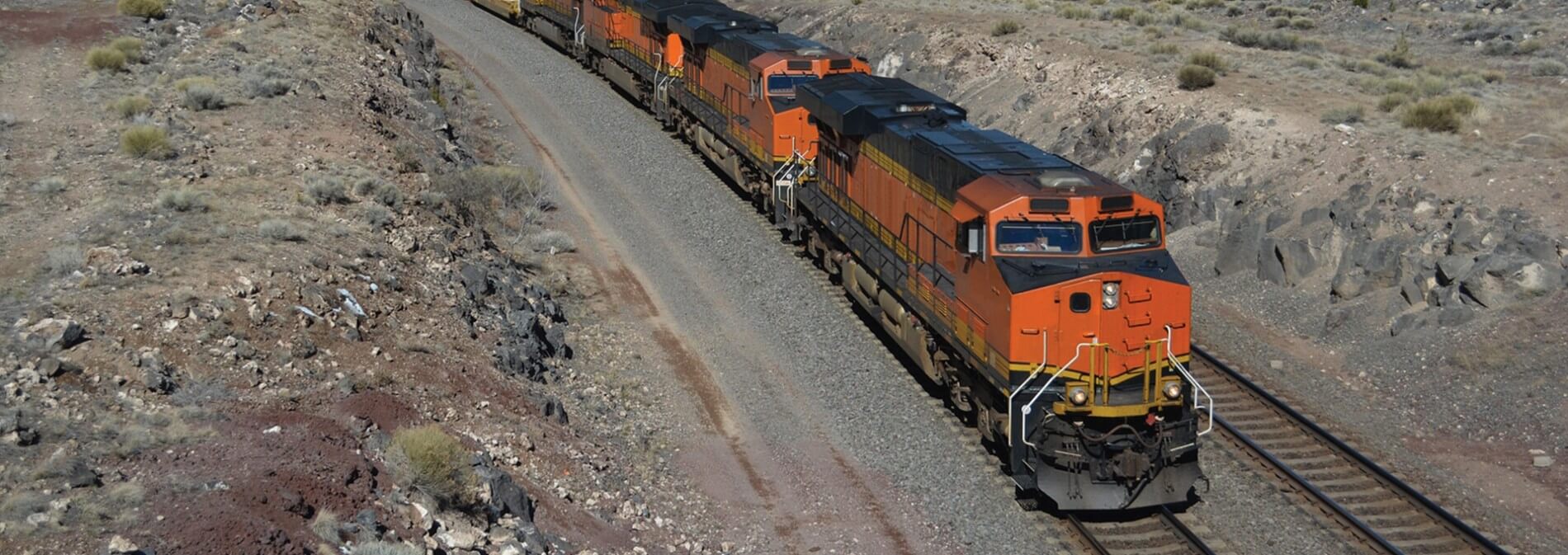Reduce Freight Shipping Costs Using Intermodal Transport
Does your business rely on intermodal shipping? A good logistics plan should always include an intermodal transport plan. Many of the largest shippers depend and even thrive because of their use of intermodal transport. Shipping by rail is simply a smart, effective and less costly way to ship freight over large distances at remarkable rates. The term “intermodal transport” sometimes confuses consumers. Yet every day, this well-established practice helps shippers transport goods from one place to another for much less.
Intermodal Transport: A Quick Definition & Example
Essentially, intermodal transport occurs when a shipment uses two (or more) ways to haul containerized freight. The most popular is the rail to over the road transport but it may involve the use of boats, trucks, and airplanes as well. Intermodal transport has made a huge improvement in transit time and is run on a very tight schedule. Shippers who fear that a shipment will take too long could be in for a pleasant surprise. Many lanes such as Chicago to Orlando deliver in an estimated 4 days. Cross country lanes such as California to New Jersey deliver in 8-10 days. Shipping by rail has proven itself to provide consistent and efficient service for regular and frequent shipments.
For example, suppose you send truckloads of machinery from San Francisco to New York every week. This type of shipment requires the use of a gas-guzzling 18-wheeler. Where an over the truck averages 6 miles to the gallon at an estimated cost of $3.00 a gallon ( September 2018 average ) vs a rail trailer that can travel 21 miles with 40,000 pounds of cargo for the same cost. It is easy to see how intermodal transport is a great cost savings alternative.
The Contribution of Malcolm McLean
A Twentieth Century trucking company owner named Malcolm McLean contributed to the rise of standardized shipping containers. His ideas ultimately promoted the spread of intermodal freight shipping. He argued transferring containerized cargo directly onto ships would expedite cargo loading and unloading.
After selling his trucking enterprise, Malcolm McLean developed the Sea-Land shipping company. It used standardized metal cargo containers to help transport cargo internationally quickly and efficiently. The company’s success ultimately led to the development of container vessels.
Today, container shipments dominate the maritime cargo hauling industry. Malcolm McLean’s ingenious idea helped make intermodal freight transportation popular around the world. This form of shipping offers both money and time savings.
Intermodal Freight Rates
Intermodal freight rates allow sellers and buyers to benefit from economies of scale. Many freight trains can haul over 100+ trailers in the same direction at the same time. Shipping freight by intermodal shipping container for a single shipment probably would not prove cost-effective. However, reusing this shipping tool regularly decreases the per shipment cost.
Today companies which transport freight long distances depend upon intermodal shipping. This method of shipping keeps them more profitable. Also, intermodal shipping is great to leverage when there are capacity issues with over the road transport. They may transfer a packed container from a rail to truck, or vice versa. Numerous ground transport shipping containers such as FedEx and UPS rely heavily on intermodal transport. The ability to use a variety of different shipping methods for hauling freight helps lower prices. It forces shipping companies to compete with one another.
New software programs assist shippers in calculating the cheapest, fastest ways to transport cargo. Most shipping firms use sophisticated logistical programs for this purpose. Intermodal freight shipping automation ultimately benefits consumers.
An Illustration
To appreciate the impact of intermodal freight shipping, simply consider its striking influence on the railroad industry. Currently, intermodal rail transportation generates substantial revenues for some railroads. During 2016 alone, this form of shipping created an estimated $8.8 billion in revenue for railroads classified as “Class 1” lines by the U.S. Department of Transportation.
At the same time, the average cost for shipping freight by rail has fallen. It has declined by some 45% in the USA since 1981. Many experts attribute this precipitous change to the improved efficiency supplied by intermodal rail transportation. As a result of deregulation, today’s intermodal freight market is robust and more competitive.
Intermodal Transport: A Significant Innovation
Presently most nations around the world use intermodal freight shipping. By transferring standardized cargo containers from one carrier to another, shipping companies increase their efficiency. They reduce freight shipping times and lower customer costs. This practice ultimately benefits anyone sending or receiving cargo on a frequent basis.
In this sense, intermodal methods of freight transportation have encouraged the growth of global commerce. Today companies frequently ship goods to customers located around the world. They have succeeded in harnessing economies of scale to perform this amazing logistical feat!






